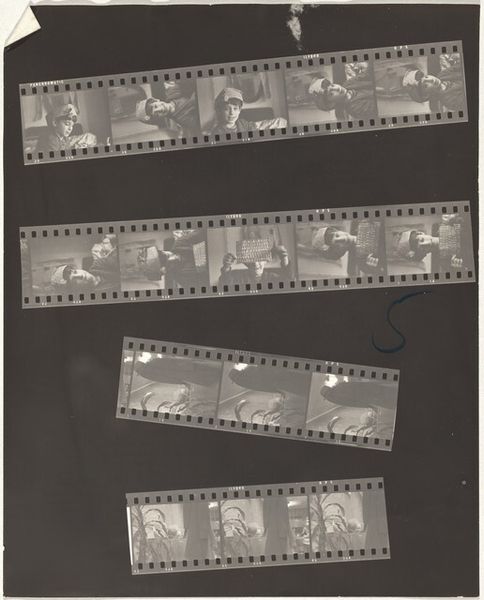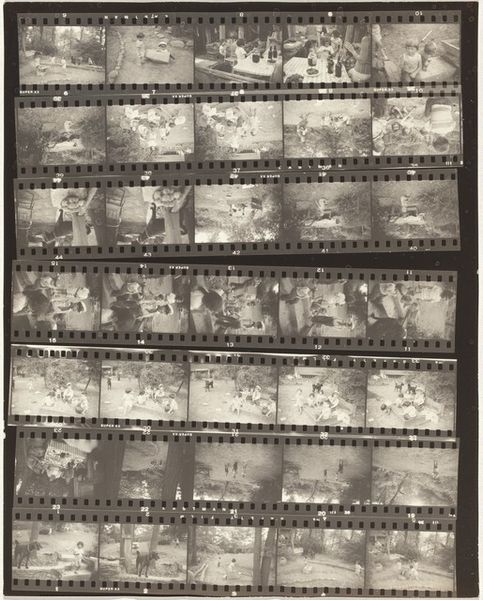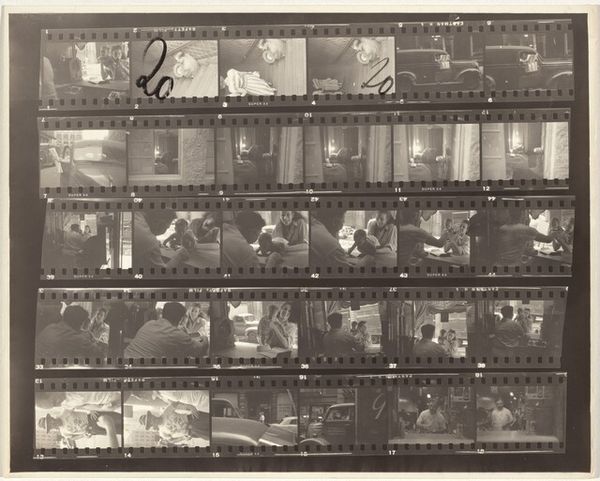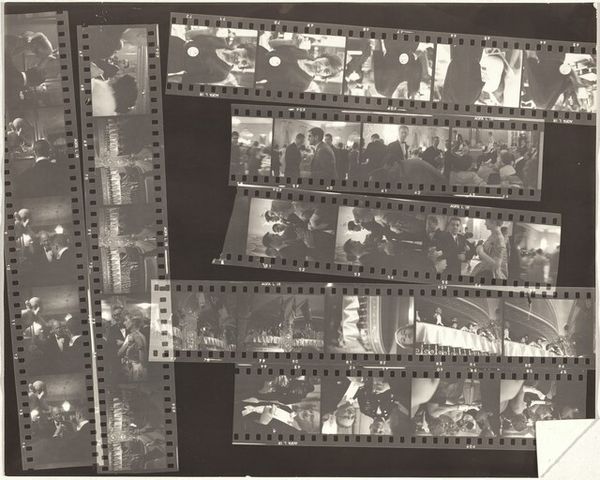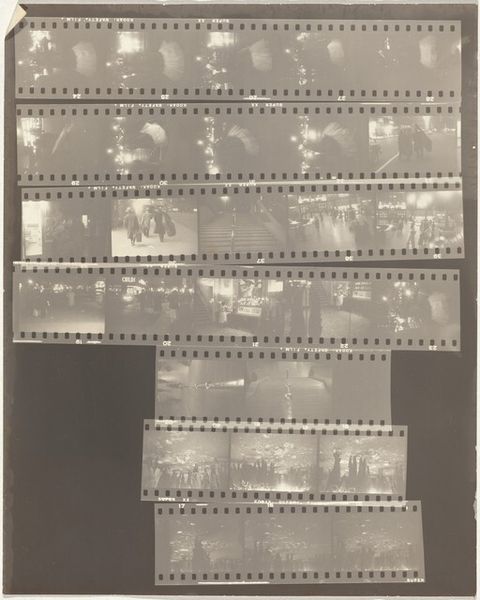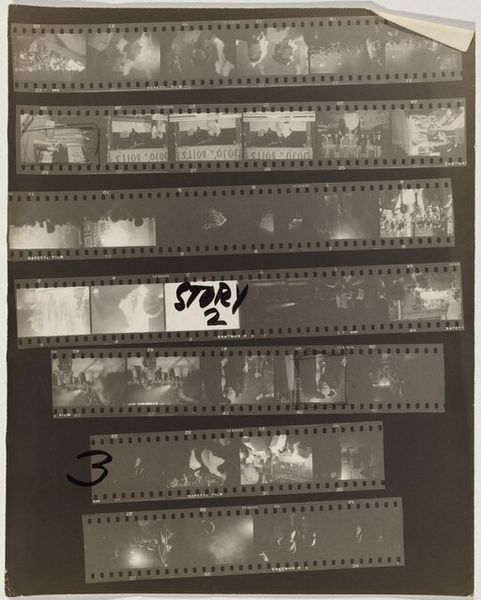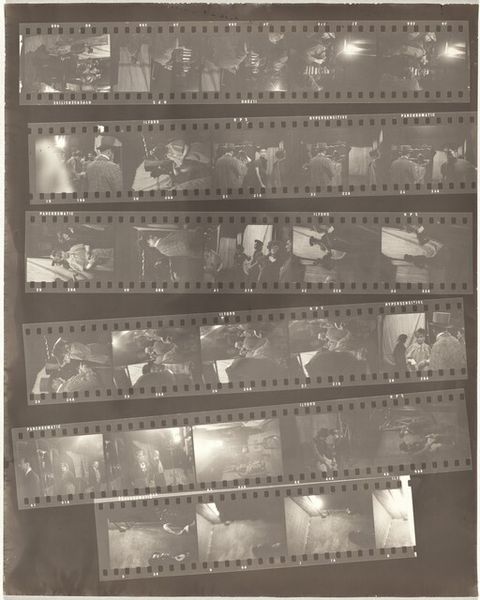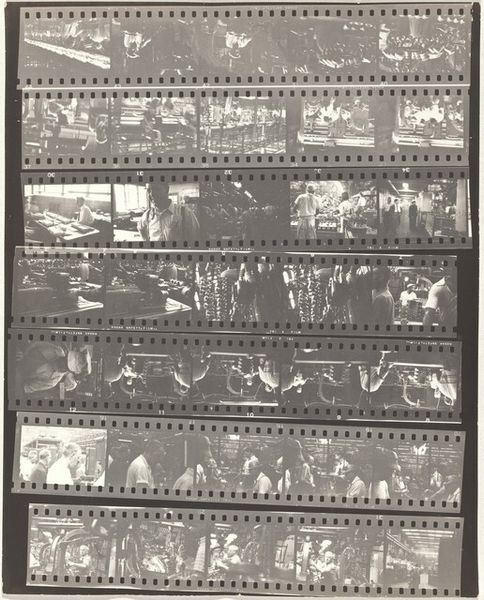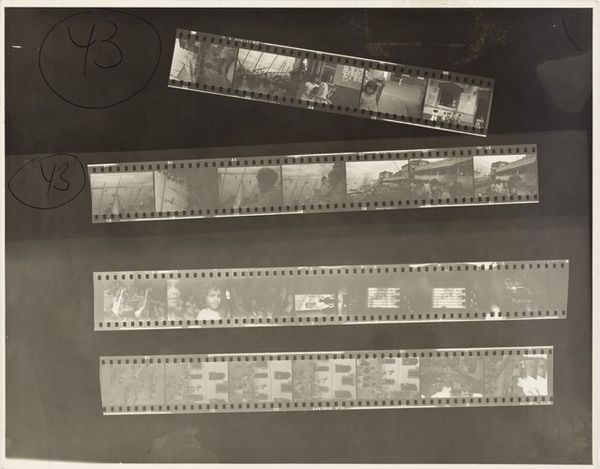
print, photography, gelatin-silver-print
#
abstract-expressionism
# print
#
archive photography
#
street-photography
#
photography
#
gelatin-silver-print
#
modernism
Dimensions: overall: 29.8 x 23.8 cm (11 3/4 x 9 3/8 in.)
Copyright: National Gallery of Art: CC0 1.0
Editor: We're looking at Robert Frank's "Bal des Beaux Arts 1" from 1949, a gelatin silver print. It's essentially a series of film strips showing various scenes. The high contrast and documentary style give it an edgy feel. What compositional elements stand out to you? Curator: The fundamental organizational principle here is the grid, isn't it? Rows of frames creating a sequence. Note how Frank uses light and shadow not just to depict subject matter within each frame, but to create a tonal rhythm across the entire work. Observe how dark and light areas interact, almost as an abstract composition in itself. Editor: I see what you mean! So it's not just about what's being photographed, but how the tonal values create a pattern. What about the framing within the frames? Some are sharp, others seem blurry or oddly cropped. Curator: Exactly. Those intentional "mistakes," as some might see them, disrupt the uniformity. Consider the philosophical implications: Does the artist prioritize representational accuracy, or something else? The variation and occasional blurring draw attention to the materiality of the photographic process itself, rather than simply documenting a scene. Editor: It's like he's pointing to the act of seeing, the imperfection of memory. I initially focused on the scenes themselves but, by analyzing the structure, I get a completely different reading. Curator: Precisely. Now consider how that awareness of structure and process can affect our understanding of Frank's subsequent works. Editor: Thinking about his later, more iconic photographs now, I see similar fingerprints in his individual pictures. Curator: This close examination reveals the architecture underlying the surface, and enriches our overall engagement with Frank's vision.
Comments
No comments
Be the first to comment and join the conversation on the ultimate creative platform.


